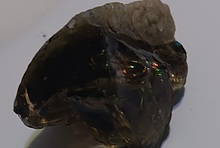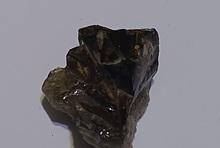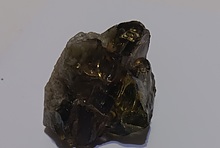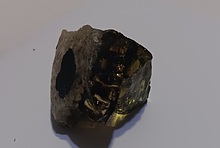Home PageAbout MindatThe Mindat ManualHistory of MindatCopyright StatusWho We AreContact UsAdvertise on Mindat
Donate to MindatCorporate SponsorshipSponsor a PageSponsored PagesMindat AdvertisersAdvertise on Mindat
Learning CenterWhat is a mineral?The most common minerals on earthInformation for EducatorsMindat ArticlesThe ElementsThe Rock H. Currier Digital LibraryGeologic Time
Minerals by PropertiesMinerals by ChemistryAdvanced Locality SearchRandom MineralRandom LocalitySearch by minIDLocalities Near MeSearch ArticlesSearch GlossaryMore Search Options
The Mindat ManualAdd a New PhotoRate PhotosLocality Edit ReportCoordinate Completion ReportAdd Glossary Item
Mining CompaniesStatisticsUsersMineral MuseumsClubs & OrganizationsMineral Shows & EventsThe Mindat DirectoryDevice SettingsThe Mineral Quiz
Photo SearchPhoto GalleriesSearch by ColorNew Photos TodayNew Photos YesterdayMembers' Photo GalleriesPast Photo of the Day GalleryPhotography
╳Discussions
💬 Home🔎 Search📅 LatestGroups
EducationOpen discussion area.Fakes & FraudsOpen discussion area.Field CollectingOpen discussion area.FossilsOpen discussion area.Gems and GemologyOpen discussion area.GeneralOpen discussion area.How to ContributeOpen discussion area.Identity HelpOpen discussion area.Improving Mindat.orgOpen discussion area.LocalitiesOpen discussion area.Lost and Stolen SpecimensOpen discussion area.MarketplaceOpen discussion area.MeteoritesOpen discussion area.Mindat ProductsOpen discussion area.Mineral ExchangesOpen discussion area.Mineral PhotographyOpen discussion area.Mineral ShowsOpen discussion area.Mineralogical ClassificationOpen discussion area.Mineralogy CourseOpen discussion area.MineralsOpen discussion area.Minerals and MuseumsOpen discussion area.PhotosOpen discussion area.Techniques for CollectorsOpen discussion area.The Rock H. Currier Digital LibraryOpen discussion area.UV MineralsOpen discussion area.Recent Images in Discussions
Identity HelpBeach Rocks (Plutonic?)

26th Feb 2012 20:40 UTCP. Michael Hutchins
I collect mineralogically interesting beach rocks from a geologically-complex area around Boston (Marblehead). Some look to me like they're displaying flow banding; some, magmatic immiscibility. Some have ~micro-graphic granite~.
(the graphic texture is (almost) too small to see w/ the naked eye)
Some have almost agate-like bands w/ xls on one side, all swirling around (folded?).
And so on.
I haven't figured out even where to look for information about these / this kind of rocks.
My first question was:
What minerals would this ~magma~ have turned into if it had cooled slowly enough?
Now I just want to learn enough to be able to look at one of these rocks and read its story, tell how it formed.
(I'm not a geologist; just love geology, mineralogy, etc.)
(MIT: Pure Math, Computer Science)
I'd treasure advice on where all to look, what discipline(s) this might fit into, technical terms that would help in searches, etc.
26th Feb 2012 22:23 UTCPaul Brandes 🌟 Manager
28th Feb 2012 00:02 UTCVik Vanrusselt Expert
http://www.bostongeology.com/
Vik

28th Feb 2012 20:58 UTCP. Michael Hutchins
I was definitely remiss in not including any photos!
Here's one of each rock that I have out for this purpose. I can certainly make zooms if they'd help.
28th Feb 2012 23:47 UTCPiotr Zając
The first one looks like almandines in some kind of shist,
Third one is some variety of chalcedony, probably flint
Second... I am not quite sure. For sure it is sedimentary rock, I see a lot of calcite, I think it has grains, so maybe it is sandstone, or even limestone with grains.




Mindat.org is an outreach project of the Hudson Institute of Mineralogy, a 501(c)(3) not-for-profit organization.
Copyright © mindat.org and the Hudson Institute of Mineralogy 1993-2024, except where stated. Most political location boundaries are © OpenStreetMap contributors. Mindat.org relies on the contributions of thousands of members and supporters. Founded in 2000 by Jolyon Ralph.
Privacy Policy - Terms & Conditions - Contact Us / DMCA issues - Report a bug/vulnerability Current server date and time: April 19, 2024 05:51:49
Copyright © mindat.org and the Hudson Institute of Mineralogy 1993-2024, except where stated. Most political location boundaries are © OpenStreetMap contributors. Mindat.org relies on the contributions of thousands of members and supporters. Founded in 2000 by Jolyon Ralph.
Privacy Policy - Terms & Conditions - Contact Us / DMCA issues - Report a bug/vulnerability Current server date and time: April 19, 2024 05:51:49











